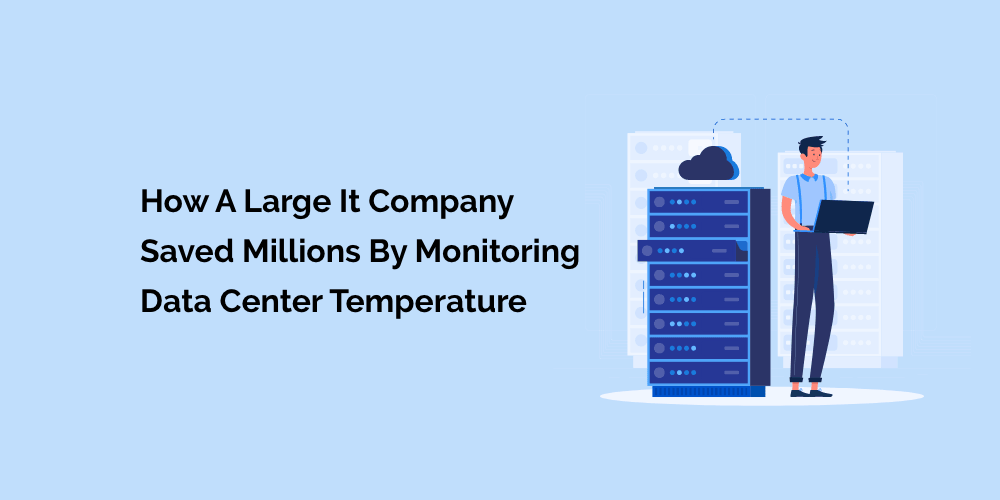Data centers have many safeguard measures to protect machines and other hardware assets. Intrusions and cyber attacks aren’t the only causes of downtime. Environmental factors like temperature and humidity fluctuations are also taken into count. These environmental factors can cause uninterruptible power supply (UPS) failures.
It is essential to monitor these environmental factors with a WiFi temperature and humidity monitor.
In this article, let’s take a closer look at why are temperature and humidity sensors important for every aspect of your data center.
Why is data center environmental monitoring important?
While security, storage, and user management get most of the attention from IT admins, many forget about environmental factors such as heat, humidity, air pressure, etc. It is vital to monitor the environmental factors for the continuous operation of data centers. Servers behave differently to different environmental factors. The most important environmental factor is heat. A 1°F increase in temperature beyond optimal level can cause an 8 - 11% decrease in server performance.
Temperature and Humidity - Why is it an important factor to monitor?
When environmental factors like temperature and humidity are not optimal, it may cause many potential risks like server downtime and unexpected power outages.
Many large IT services company faces one major issue with their server rooms getting overheated because of uneven cooling at various parts of the room. The company had installed a state-of-the-art HVAC system, heat exhaust, and central cooling elements. They found some of the rack's temperatures would shoot up the optimum level causing the servers to shut down, bringing down their network. The company did an internal audit on why the servers would often crash and found some interesting facts.
- The servers on the corners of the room or near the AC vents operated with good efficiency.
- As the servers moved away from the Air Condition cooling ducts, they were prone to more shutdown
- The rate of server shut down was high during the summers
All this pointed out that the temperature inside the server room was maintained properly. So, the company hired a person to check the temperature regularly. But it became a tedious problem to keep reports, and check optimum levels at various points, and there were lapses.
How do temperature and humidity sensors help?
- Three temperature and humidity sensors were installed in each rack - one below the rack and two on both sides of the rack
- Sensors were installed at cooling points near the Air Condition vents
- Sensors were installed in different parts of the room to monitor the room’s ambient temperature
- Hot zones inside the server room were identified, and sensors were installed.
- Based on the location of the sensor, the alerts were set – the sensors near the AC vent would trigger an alert if
- the temperature goes above 20°C (68°C). The sensors on the rack trigger an alert if the temperature goes
- above 27°C (80°F). And the sensor in hot zones will trigger an alert if the room temperature goes above 25°C (67°F).
So when there is a temperature excursion at any point in the server room or rack an alert was triggered in the admin’s mobile. The admin will then act on the alert and avert any server failure because of temperature failure. This way the company could drill down the issue if a rack fails – whether it’s the internal components or outside temperature.
The company used the IRIS WebAPP API to pull the information from IRIS Application Cloud and use it on their network management dashboard.
tempCube temperature and humidity sensor
tempCube is a WiFi temperature and humidity sensor, have many applications like server rooms, wine cellars, greenhouse, vacation homes, RV, baby monitoring and more.
This wireless temperature and humidity sensor helps to monitor the ambient temperature and humidity range whenever it goes to a critical stage.
Features of tempCube are as follows:
- Monitor temperature and humidity across multiple racks and servers across multiple data centers
- Complete wireless and easy to install it anywhere you want
- Real-time E-mail and text alerts when there is a temperature/humidity excursion
- Rechargeable battery that can last for more than a month on a single charge
- Supports data logger to go back in time and get historical reports
- Simple and intuitive mobile application with a single dashboard view. Available for both android and iOS.








